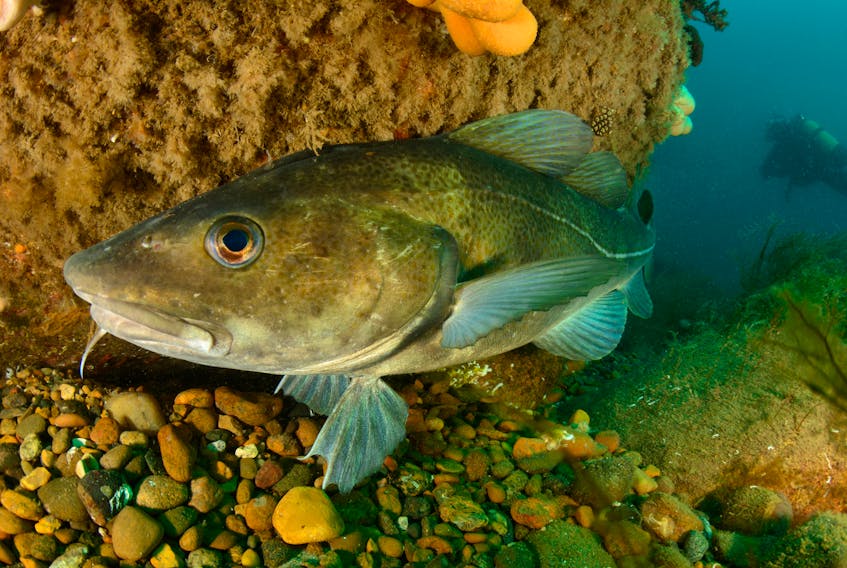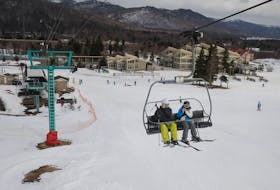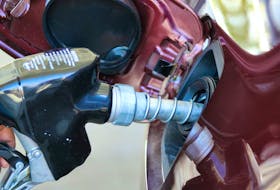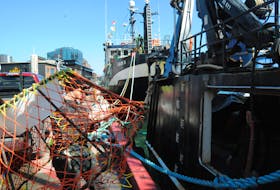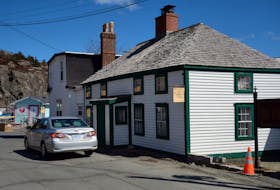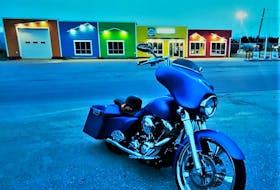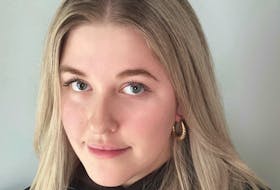Alberto Wareham would love to get more cod fish.
When you depend on it to keep more than 200 people working, and the doors of the fish plant open, more fish means more work, more paycheques and a more consistent supply of cod to the markets.
However, the owner of Icewater Seafoods in Arnold’s Cove, NL, says going too far, too fast with the commercial quotas for cod along Newfoundland’s northeast coast and Labrador would be no good for anyone in the long run.
He likes what he sees in the rebuilding plan for Atlantic cod in the fishing zone 2J3KL, unveiled Tuesday by the Department of Fisheries and Oceans (DFO).
That plan is the result of new amendments to Canada’s Fisheries Act with the passage of Bill C-28. By law, the federal fisheries minister has to adopt rebuilding plans for stocks that are deemed to be in the critical zone, which is how northern cod is currently listed.
For one thing, Wareham said, the plan gives everyone depending on this cod stock a better sense of what to expect in terms of quotas for the next five years.

Usually, quotas are determined annually, and it can be May or June before that information is released.
The Harvest Rule Decision (HDR) element of the rebuilding plan will help determine removals based on the size of the spawning stock biomass (SSB).
Wareham says since the SSB doesn’t appear to have changed much in the past couple of years, and there’s no expectation there will be a sudden increase in the cod population, it’s reasonable to expect commercial quotas will remain status quo for 2021 and the next few years.
“We are at 400,000 tonnes of spawning stock biomass (SSB) today,” Wareham explained. “If we go down to a 200,000 tonne SSB, we get 4,000-5,000 metric tonne quota. And if the SSB goes to 600,000 we’d have a fishery of no more than 18-19,000 tonnes.”
The formula is based on a Limit Reference Point (LRP) of 800,000 metric tonnes. The 2J3KL cod stock won’t move from critical to cautionary classification until the spawning stock biomass reaches 75 per cent of the LRP.
More information can be found in the DFO document, available at: https://www.dfo-mpo.gc.ca/fisheries-peches/ifmp-gmp/cod-morue/2020/cod-atl-morue-2020-eng.html

The Fish Food and Allied Workers (FFAW) union, however, is not as welcoming of the rebuilding document.
They called it “discouraging,” alleging there was not enough consultation with the industry.
“This rebuilding plan was developed and launched without any recent consultation with harvesters, or the sector in general. Since the moratorium, harvesters have worked closely with DFO for co-management and these efforts have been failing in recent years,” said FFAW president Keith Sullivan in a press release.
Others disagree.
Julie Diamond is regional manager of resource management and integrated fisheries with DFO in St. John’s.
She told SaltWire the department has had multiple meetings, well over 20 in the past six or seven years, with all stakeholders, including FFAW, to draft the rebuilding plan.
“There have been many opportunities, both formal and informal to discuss the rebuilding plan for northern cod, and the views expressed contributed to the creation of this plan,” she said.

“We’ve been talking about this for the past six or seven years,” Wareham said, “and all sectors of the industry were involved: offshore, inshore, non-governmental agencies, the FFAW, DFO management and DFO science.”
Diamond added, the rebuilding plan is an “evergreen” document, meaning as things change in the northern cod stock, the rebuilding plan can be adjusted.
Sullivan alleged, as well, that the harvesting management measures in the rebuilding plan are “unnecessarily restrictive.”
Landings in 2019 were 10,560 tonnes and in 2020 landings decreased to 10,100 tonnes, he said, meaning harvest rates for this stock remain exceptionally low at two to three percent of the estimated 400,000-tonne SSB.
“By comparison, the Barents Sea cod stock, another large cod stock, had an SSB of 1.4 million tonnes and approximately 700,000-tonne quota – a harvest rate of over 40 per cent,” Sullivan pointed out.
“Under the DFO Plan, the harvest rate will not increase until the SSB reaches 600,000 tonnes, meaning the maximum quota available to that point would be approximately 19,000 tonnes. Consequently, northern cod will continue to be one of the least harvested cod fisheries in the world and an economic mess for rural Newfoundland and Labrador.
“We are trying to rebuild an industry,” Sullivan continues. “We have long argued for a measured, responsible approach to cod quotas, whereby the harvest rate increases as the stock increases. This plan does not allow for meaningful development of our cod fishery. It actually deters investment by harvesters and processors into our cod fishery and our rural communities.”
Wareham, however, says comparing the Barents Sea cod to the 2J3KL cod is misleading.
Their marine ecosystem is different, their cod is not considered a critical stock, and the natural mortality within their cod stock is much lower.
Wareham urges patience in the rebuilding of the 2J3KL cod stock.
“If we don’t do it right now we will destroy the opportunity that might be there,” he said.
Sustainability in demand
Sustainable management is crucial, not only to rebuild the stocks but to eventually obtain Marine Stewardship Certification (MSC), said Wareham.
He said consumers around the globe are demanding that the fish they purchase comes from a stock that’s sustainably managed. They don’t want to think they’ve contributed to overfishing through their seafood purchases.
“Our customers in the U.K., primarily Marks and Spencer, want to know that the fish they’re buying from Newfoundland and Labrador is managed sustainably.
“And because we are in the critical zone we cannot get MSC certification for Newfoundland cod right now. And the stock is just not big enough now to have it certified,” said Wareham.
“By having our fisheries improvement project and doing rebuilding plans and having a better understanding of the science. That’s all we can do right now.”
Wareham said the Atlantic Groundfish Council is quite comfortable with the Harvest Rule Decision mechanism in the rebuilding plan.
“Everybody in the industry knows now the range what of total removals can be based on science, so once we get the science updates, we will know what the quotas can be depending on the spawning stock biomass.
Knowing what the range of quotas can be, based on the spawning biomass, enables harvesters and people like Wareham to plan their business for the year ahead.
For 2021 for Icewater Seafoods, he said, it means they will likely be able to buy a similar amount of cod from inshore harvesters as they did this year.
The DFO regional director hinted Wareham is probably correct, based on the current biomass and the new harvesting rule.
“We don’t anticipate harvesters will see a significant difference in terms of their (cod) fishing activity in 2021,” said Diamond.
The long-term hope, said Wareham, is that the northern cod stock will be a major part of our economy in the years ahead.’
And as much as it would be nice to have more cod to process, more paycheques to write and more product going to the UK market, he knows fishing too much, too soon, will not help anyone.
“What’s the sense if I get more cod every year for the next two or three years and then I got to shut down that plant after three years?
“We can’t hit that stock too hard.”
Cod economics, past and present.
Before a moratorium on fishing was declared in 1992, the commercial fishery in Newfoundland and Labrador was highly dependent on cod and supported significant employment in the harvesting and processing sectors (24,400 and 21,000 jobs respectively).
On average, approximately 63 per cent of fishing revenue for the less-than-35-foot fleet was derived from this one species.
In the 35- to 65-foot category, 2J3KL Northern cod accounted for an average of 37 per cent of fishing revenue.
At today’s landed prices, the 1987-91 annual average 2J3KL cod catch would have a landed value of approximately $200 million.
Harvesters in 2J3KL are now less dependent on cod.
In 2019, for enterprises less than 40 feet, an average of approximately 16 per cent of fishing income was derived from cod, whereas that figure was less than one per cent for enterprises greater than 40 feet.
Today Newfoundland and Labrador fish harvesters depend mainly on crab and shrimp.
Source: Department of Fisheries and Oceans

